Why tiny White Pine County has few options for replacing century-old schools
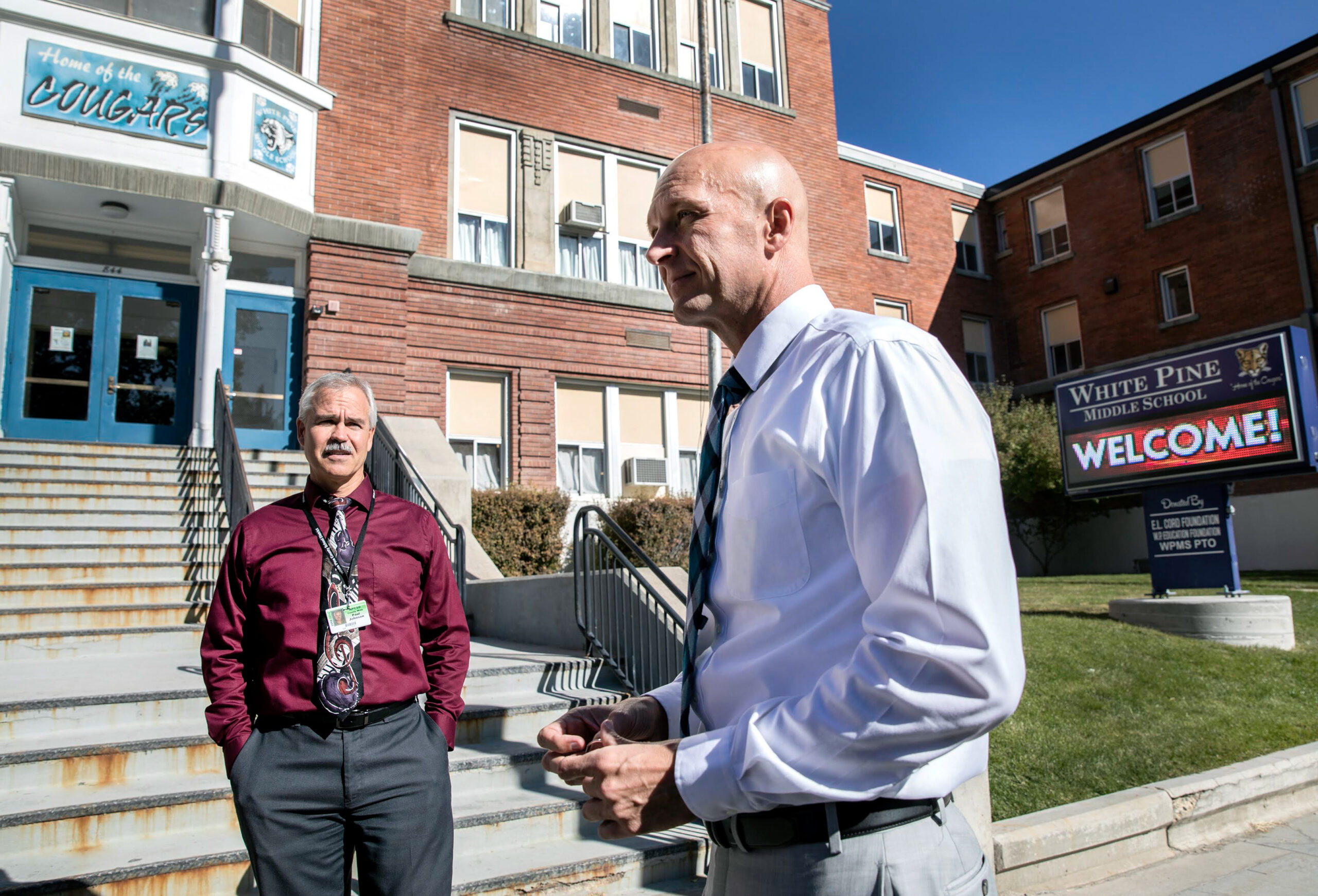
When classes resume in August, White Pine County students will have to continue to make do with century-old elementary and middle school facilities that the district superintendent says will cost more to fix than replace.
At over 100 years old, David E. Norman Elementary School and White Pine Middle School in Ely are part of state history. But White Pine County School District Superintendent Adam Young said their age also makes them “inadequate and concerning.”
The elementary school, built in 1909, has poor indoor air quality and lacks a reliable heating and cooling system that can make it tough for students during extreme weather conditions. The middle school, built in 1913, has similar issues.
Both buildings have limited or noncompliant Americans with Disabilities Act accessibility. One of the biggest challenges the district faces with both facilities is the asbestos within the walls, floors, plumbing and ceiling. That means any upgrades to the facilities will require asbestos abatement, which can make any renovation project more expensive.
But historically, there’s been little to no dedicated state funding for school capital needs. Instead, school districts typically use public bonds to pay for new buildings or raise funds through their counties’ property tax.
White Pine County is already at its statutory property tax cap of $3.66 for every $100 of assessed value, limiting the district’s bonding capacity. Even so, with a population of about 9,000, Young said the county — located in eastern Nevada bordering Utah — doesn’t have a large enough tax base to raise the amount needed to pay for a new school building.
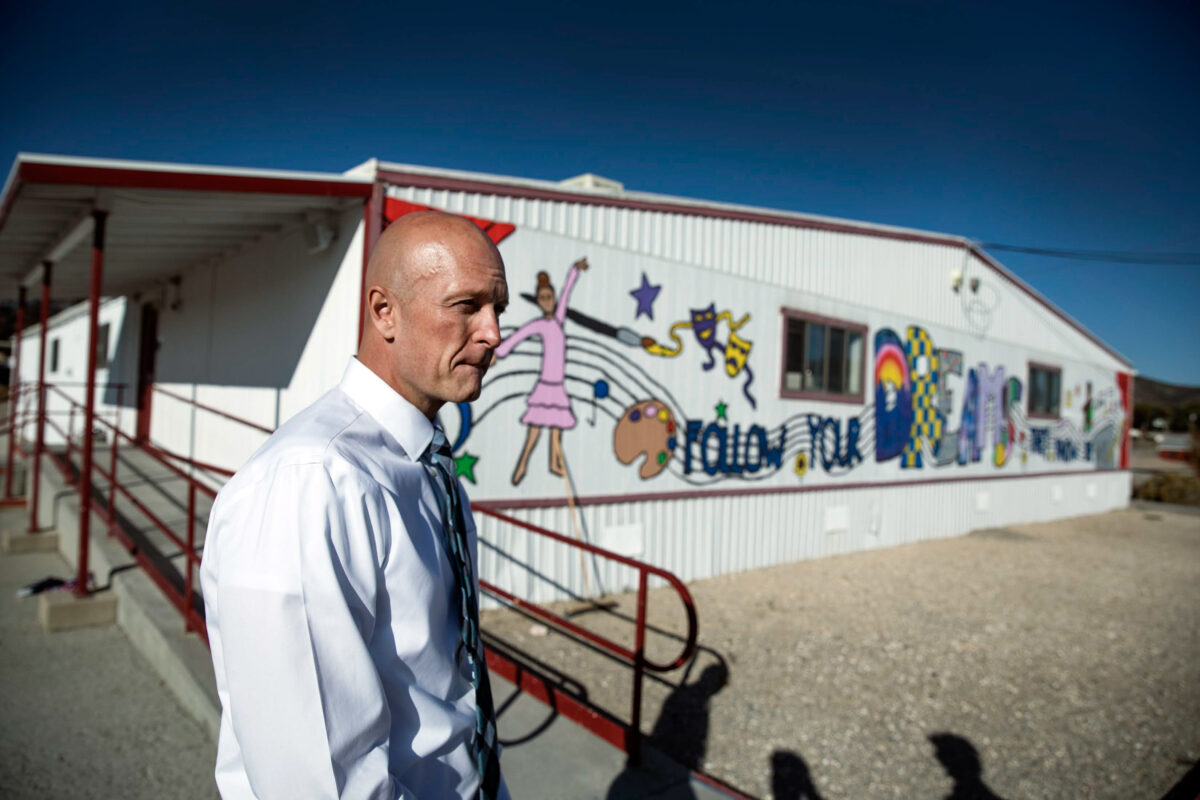
In 2021, the district worked with Sen. Pete Goicoechea (R-Eureka) on a bill, SB395, that would have allowed White Pine County voters to go beyond the tax cap in order to raise capital revenue that would partially finance a new school. But that bill died in the session.
During the 2023 legislative session, Young, alongside teachers, students and staff, trekked to Carson City to plead with lawmakers to support a bill, SB100, that would have appropriated $60 million to the district to replace those facilities and build a new K-8 school building for those grade levels. Encouraged by Nevada's record budget surplus heading into the session, Young and other district officials were hopeful that their request would be more successful this time around.
White Pine wasn’t the only school district looking for financial support for a new school. Members of the Owyhee tribal community were asking for lawmakers to appropriate $64.5 million to build a new school to replace its existing K-12 school building that was built in the 1950s and is part of the Elko County School District.
The White Pine school bill died in a committee. But lawmakers did pass the Owyhee school bill, AB519, which appropriates $64.5 million for the new school, and provides a mechanism for other rural counties to help fund their school district’s capital projects by dedicating existing county funds to those efforts or by raising additional taxes.
The bill also creates a fund to help finance rural school districts’ capital project and seeded it with $50 million in state money — $25 million of which is dedicated for projects on tribal land.
The Nevada Independent interviewed Young on the district’s next steps following the end of the session.
This interview has been edited for clarity and length. Explanations of certain terms or ideas have been added in italics as needed.
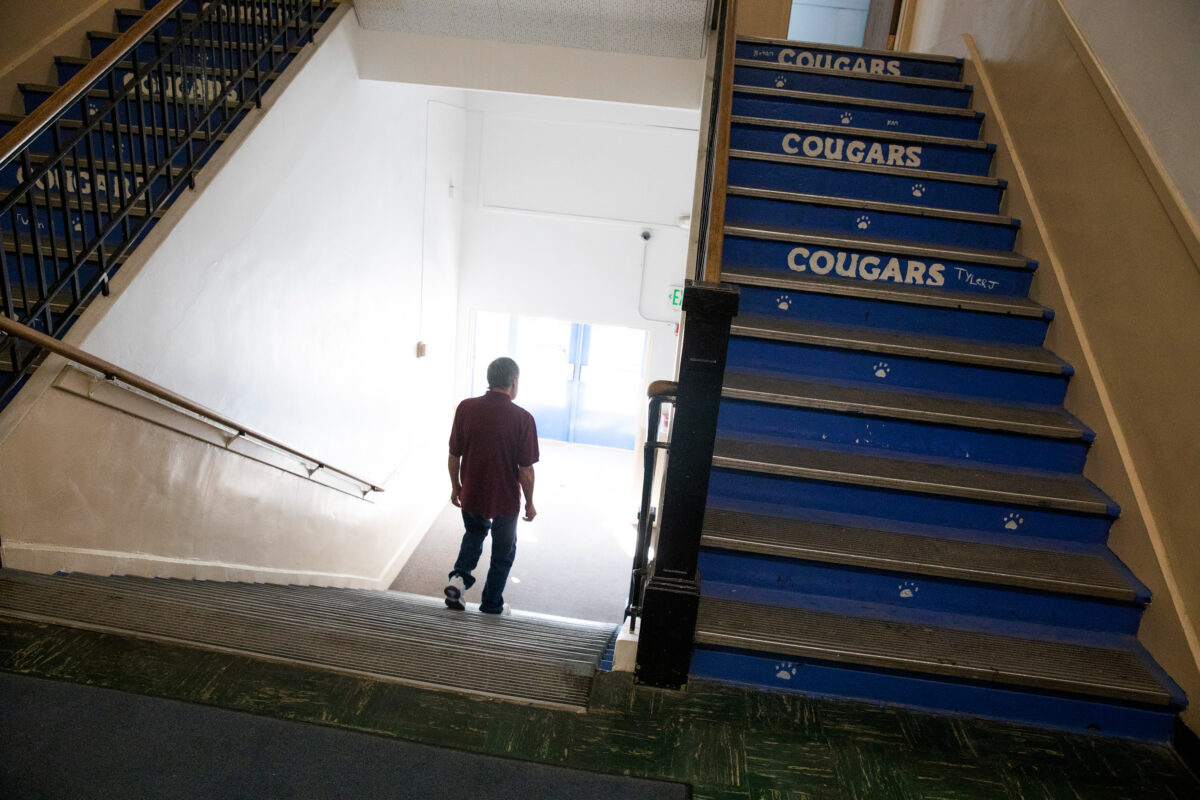
What issues exist within David E. Norman Elementary and White Pine Middle School?
I mean, they're just old, 1909 and 1913. The biggest problem that we have is any type of renovation that we do always requires asbestos abatement. That's what the buildings were insulated with back in the day. So even a project that might appear to be really, really simple, once that becomes a part of it, it starts to become really expensive.
The different analyses that we've had done on those two schools, what they say and if I can summarize it as briefly as possible, is that if you're going to do any type of renovation, it's going to be so expensive that you might as well just build a new school.
So if you're going to spend $20 million, why not spend $30 million to just build a new school? And so our thought was, ‘Well, let's try to be as efficient as possible, and we'll just combine those two campuses,’ because we probably could have replaced one of them for $20 or $25 million but they're both in need of replacement. So our thinking was we'll just combine both of the campuses, try to get it done, which is obviously a big price tag, and then have a bunch of operating efficiencies from the staffing perspective by putting those two schools together.
The David E. Norman campus – the elementary campus – it's got seven or eight different outbuildings so one of our biggest concerns there is the security of the campus because you can access it from anywhere. There's no real secure perimeter, which in this day and age always makes things scary.
How much would a new K-8 school cost?
Our estimates are $57 million to $62 million.
Is there any funding available to help the district pay for the new school building?
No, there’s not. School construction funding, the way that it works in Nevada, is a local issue. We would need to generate those funds here locally. We're already at the tax cap. Now AB519 — which made the appropriation to the Elko County School District — allows for a county commission to exceed the tax cap by 25 cents per $100. Obviously, the county would have to agree to do that.
But in our case, we just don't have a large enough tax base to generate the type of funds that we would need to replace those schools.
(According to the district’s Chief Financial Officer Paul Johnson, the annual revenue the district would receive from a potential $0.25 property tax would secure a 20-year bond of up to $7 million to $8 million.)
If we went that route, it would ... certainly be helpful, but it would put us at a disadvantage in attracting new economic development within our county because our tax rate is going to be higher than everywhere else. It could be helpful but it's just not going to be enough to do any type of replacement or any major renovation.
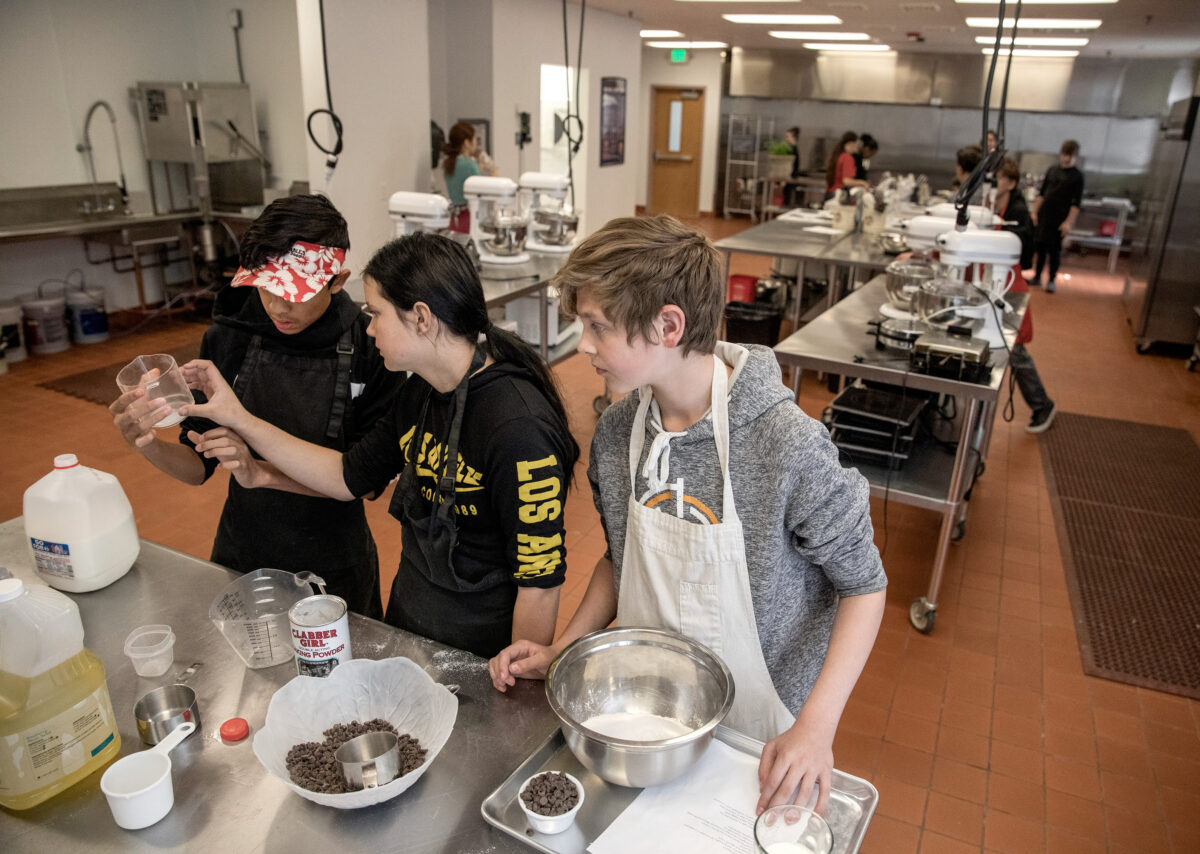
Even though raising the tax cap wouldn’t be enough to fund the construction of a new school, is it still something you are discussing with White Pine County officials?
Yeah. Everything remains on the table. Part of AB519 established and did fund a $25 million pot for all of the rural school districts to access. So of course, we're looking into that to find out how viable that is. My assumption is that because we're not the only rural school district in this predicament – $25 million spread among the 15 rural school districts is not going to go very far for any one school district. So that's a pot of state funds that could be available based on AB519. But again, $25 million is less than half of what we were asking for with Senate Bill 100.
During SB100’s hearing, lawmakers suggested the district find other creative ways to raise the funds, and even suggested partnering with local businesses, mining companies and even neighboring counties for support. What did you think of those ideas?
One of the suggestions was Eureka County. I am not sure exactly what the genesis of that suggestion is. I'm not aware of a legal way that Eureka County or the Eureka County School District could loan us money, and even if that legal mechanism existed, I don't know why they would. I'm confused by that suggestion. I don't understand it.
Our local mine, we work with them extensively, but I think people forget that there's different types of mining in Nevada. Our mine is a copper mine, and the level of wealth that a copper mine generates compared to the level of wealth that a gold mine generates, they're just not the same. Our mine is extremely generous in helping us with student activities, athletics, they fund some of our robotics excursions — they're just a great, great partner for us. But our mine is not going to be able to grant us or even loan $20 million or $30 million to build a school. It's not feasible.
Could they contribute, would they contribute a smaller sum than that? Absolutely. But it's gonna take 30 different contributors if we're looking at a million or a couple million dollars for each one of those contributors to get us to the point where we have enough money to do something substantial. All of those things are options and they're all willing to be part of the solution, but no one of them is enough.
We're thrilled that the Owyhee school is going to be funded. I have no criticisms of that whatsoever. I'm so happy for that community. They deserve that and I'm really, really thankful that they got that appropriation.
I think what that does for us, is it says, ‘Oh well, I guess if one school district is going to be made an appropriation, then what would be the reason that another one wouldn’t it be?’ We're not ready to go down a litigation path, but I think that there's an argument to be made that if that type of an appropriation was made for one school district, our need is just as substantial as that need was, maybe even more if you look at the age of the facilities.
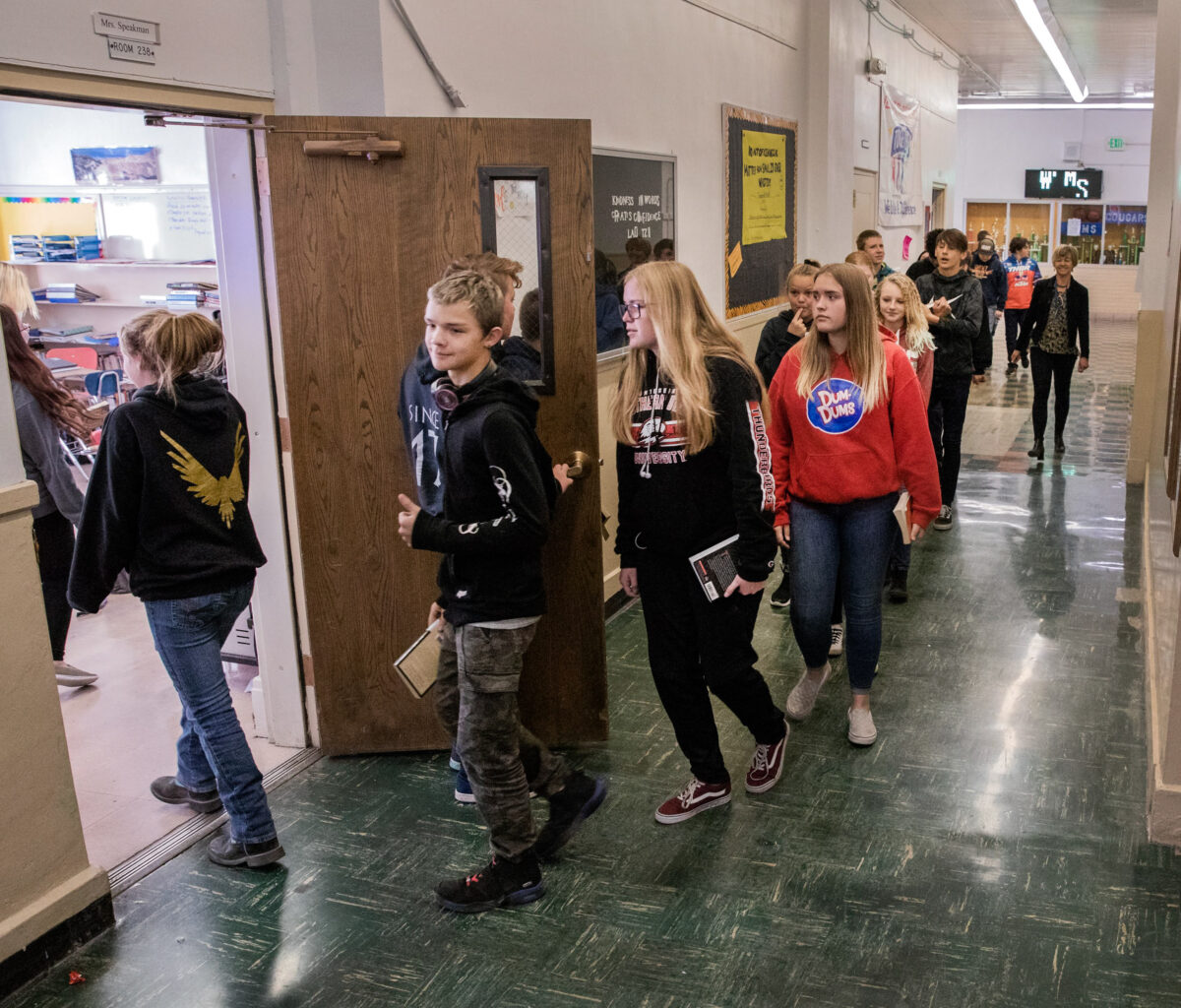
During this legislative session, the governor and the Legislature increased K-12 education spending. Your district is gaining an additional $3.8 million million over the next two years. Could you use those new funds to build the school?
We can't. We've been prohibited by state law from actually saving money in our ending fund balance, right? It's part of the [Pupil-Centered Funding Plan] legislation. If our ending fund balance exceeds 16.6 percent of our budget, we’ve got to give that back to the state anyway.
So before the PCFP, we would have been able to save, save, save and then just pay cash for a capital project kind of like how the Eureka County School District has done. But now we're at the point where if we're really conservative in our spending, it doesn't benefit us at all because we’ve got to give that money back to the state anyway. So that option is gone.
This operational revenue that we're receiving, we could maybe spend a portion of that on capital improvements each and every year but those are all going to be small projects, which we already do. We're doing a bunch of roofing projects this summer, but none of that's going to be sufficient to build a new school.
My other response to that question would be, which of the things that we're doing for kids should I not do in order to replace the 1909 school? We've invested those funds in paying our educators better … and we've added programs that are really great for kids. I would hate to have a legislator suggest that you should not offer those programs so that you can build a new school. I don't think that seems like a fair ask to me.
What happens now for this upcoming school year and school years to come? What do these ongoing conditions mean for your students?
Our community is going to continue to do everything that we can to make the schools that we have wonderful, safe, vibrant, clean — those are things that we work on all the time. Just because they're old, doesn't mean that they're horrible. I mean, there are parts of them where if you came in as an outsider, you'd go, ‘Wow, that kind of does look horrible,’ but for us, we're just used to it.
So we'll keep them as clean as we can. We'll continue to do the minor repairs. When we have to do asbestos abatement, we'll do the asbestos abatement. But we're not going to be spending tons of money on things like bells and whistles for those old schools, because what's the point?
We're just going to continue to put one foot in front of the other and keep them as clean and safe and vibrant as possible and continue to explore what our options are as far as the next session or whether litigation is part of that.
Correction: July 17, 2023 at 3:50 p.m. This story has been updated to remove a section of the story that was incorrectly stated that SB10, a bill which allows the Nevada State Infrastructure Bank to issue loans and other financial assistance for K-12 school facilities, did not pass during the 2023 legislative session. The bill was passed, but a proposed $50 million appropriation for the Nevada State Infrastructure Bank Fund was removed from the bill.
Correction: July 18, 2023 at 10:53 a.m. This story was updated to clarify that the annual revenue from a potential 25 cent property tax could help the school district’s secure a 20-year bond of up to $7 million to $8 million.)
